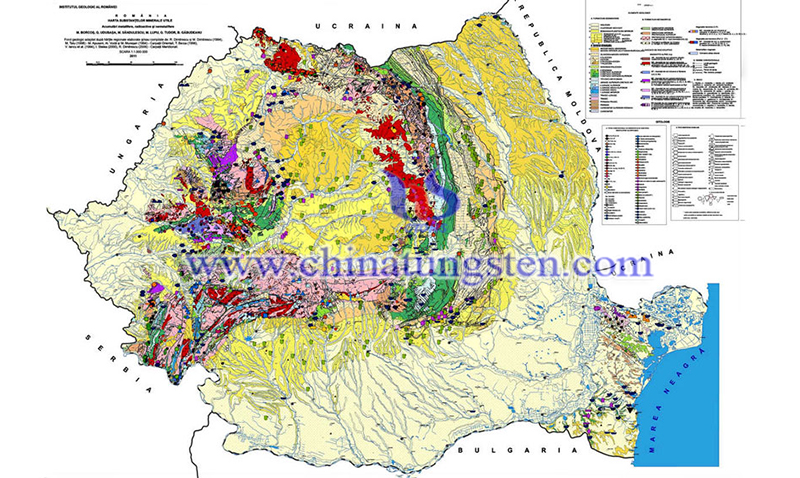Including Molybdenum Polymetallic Ores, Romania Revalues Its Mineral Resources
- Details
- Category: Tungsten's News
- Published on Thursday, 24 September 2020 21:38
Including molybdenum polymetallic ores, Romania revalues the country's mineral resources. According to a report from the Mining SEE website, at the level of the National Agency for Mineral Resources (NAMR) a quantitative, qualitative and value revaluation action is in full swing, for over 700 deposits of solid minerals, then following to move to mineral waters and oil reserves.
Romania is a country rich in mineral resources, but the reality is that we no longer know how much this wealth hidden in thousands of deposits is worth. The last quantitative revaluation was made 15 years ago. Since then, the increasing demand for raw material has led to massive exploitation of mineral resources, and new deposits have been discovered in parallel. However, it is difficult to quantify the value of these deposits, such as molybdenum, but for specialists, the value of a deposit is given by its size and quality.

Although it is difficult to quantify these deposits in monetary value, for mining experts, the value of a deposit is determined by its size and quality. In the NAMR operation, about 60 deposits of ore, coal, building materials, etc. have been revalued and tens of government decisions have been drawn up aiming at the registration of the real reserves at the current level of detail and knowledge. The new values of reserves are registered in the inventory of assets in the public domain of the state, in conditions in which there are deposits whose reserves have never been valued, having only an initial homologation thereof. In this case, there are some deposits that have not been evaluated before and can only be preliminary assessments.
In 1925, Romania made its first database on deposits. After more than 40 years, in 1968, geological data was introduced for the first time in a computer purchased from the U.S. Subsequently, in 1971, another computer was purchased, also from the U.S., for data storage. During 1997-1999, NAMR had made one of the most performing databases in the oil industry. Today, all data stored at the time with great effort is lost. Now, it must be re-uploaded.
Copper deposits are estimated at around 2 billion tons, and the state-owned company Cupru Min holds the rights of exploitation for the largest deposit in Romania, the one in Rosia Poieni, where 60% of the country's reserves are located. Although the country is the European country with the largest copper reserves, the manufacturing industry is missing. It existed but was destroyed after 1990, and now the copper ore concentrate is exported and processed products are imported. In 1990 there were 3 plants where processing was made, but one by one they have all been destroyed by failed privatizations.
Another important resource is represented by polymetallic ores. According to the Economic Encyclopedia of Mineral Resources, there are 90 million tons of polymetallic ores in Romania. One ton of polymetallic ore contains 10 grams of molybdenum, 30 grams of nickel and cobalt, 50 grams of chromium, 300 grams of gallium, 1,000 grams of titanium, 2,500 grams of vanadium and 5,000 grams of arsenic.
| Molybdenum Supplier: Chinatungsten Online www.molybdenum.com.cn | Tel.: 86 592 5129696; Fax: 86 592 5129797;Email:sales@chinatungsten.com |
| Tungsten News & Prices, 3G Version: http://3g.chinatungsten.com | Molybdenum News & Molybdenum Price: http://news.molybdenum.com.cn |



 sales@chinatungsten.com
sales@chinatungsten.com